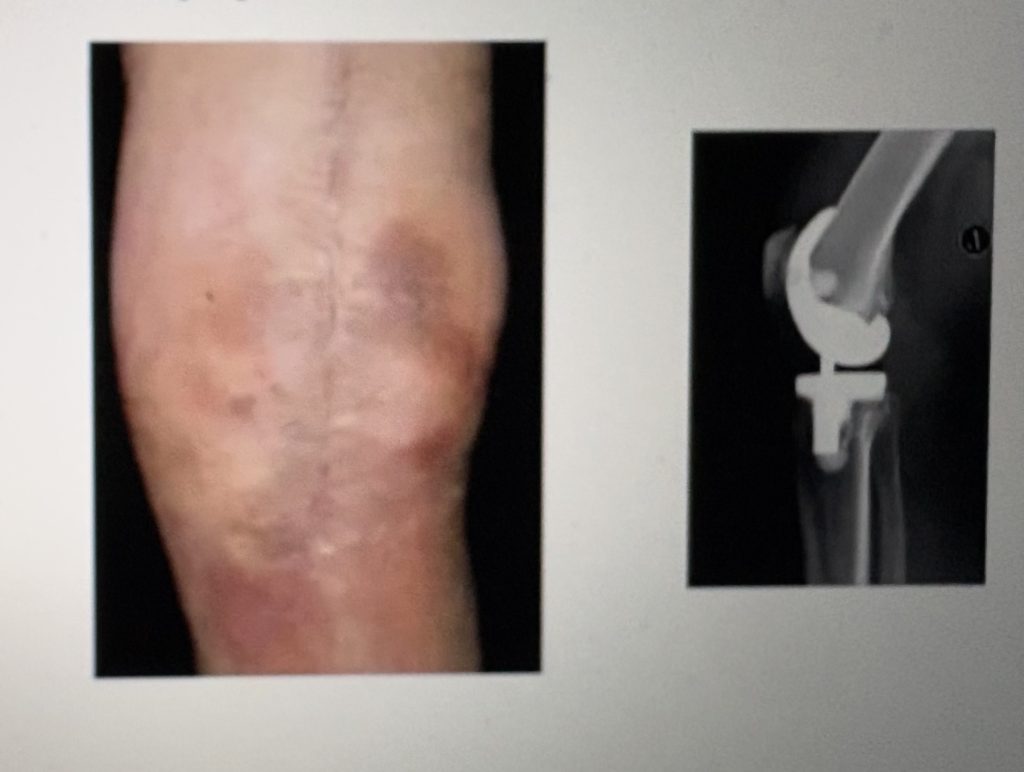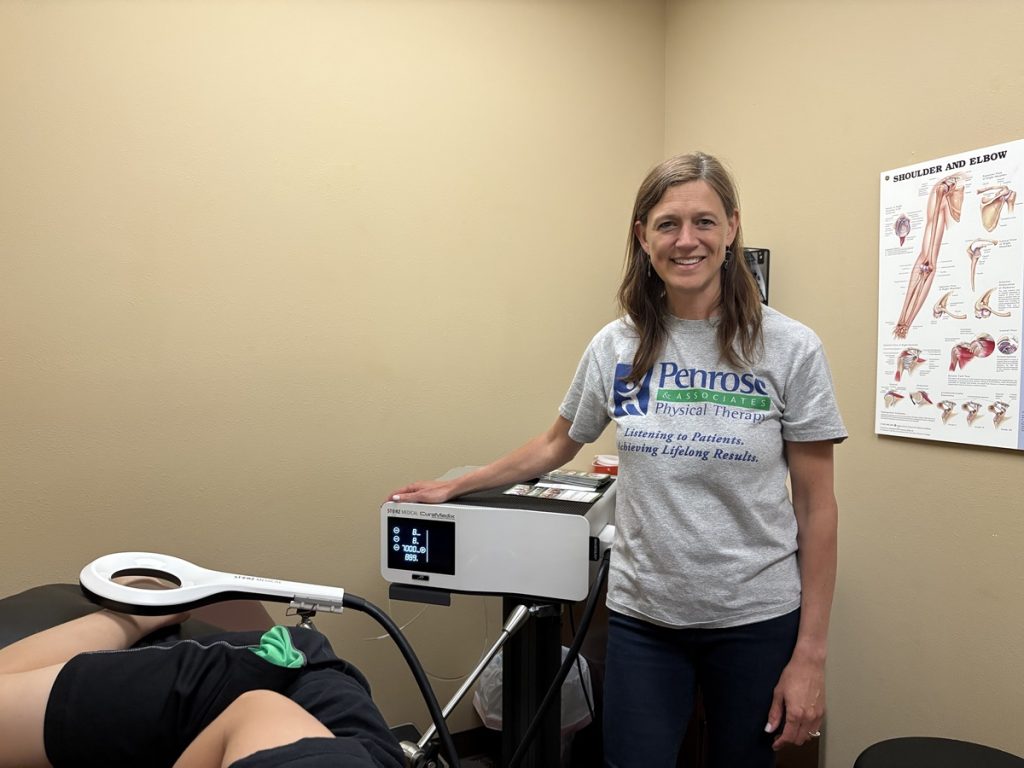Submitted by Dr. Jennifer Penrose of Penrose & Associates Physical Therapy
EMTT (Extracorporeal Magnetotransduction Therapy) is a newer form of therapy that uses high-energy magnetic fields applied non-invasively to stimulate healing in tissues. It is different from traditional PEMF (Pulsed Electromagnetic Field therapy) because EMTT uses much higher oscillation frequencies and energy levels, aiming for deeper tissue penetration and stronger biological effects.
Now, in the context of post-total knee or total hip replacement, there are two main areas that it helps with:
- Swelling (Postoperative inflammation/edema)
- Bone-to-prosthesis adhesion (osseointegration or stability of the implant) – especially important for anyone with slightly softer bone
Here’s how EMTT is thought to help:

1. Reducing Postoperative Swelling:
- EMTT stimulates microcirculation and lymphatic drainage, helping the body clear inflammatory byproducts more quickly. This will allow you to have better range of motion faster and improve faster. Swelling is big reason why people have to stay on a cane or walker longer or use pain medications longer than they desire.
- It may modulate inflammatory cytokines (like IL-1β and TNF-α), leading to faster resolution of soft tissue inflammation. Inflammation after the trauma of surgery is normal but some people have more of a “cytokine reaction” than others. Remember the “cytokine storm” that was talked about during some people’s reaction to Covid that caused airways to close and many of the very challenging situations?
- By improving cellular metabolism, EMTT encourages faster healing and reduces fluid accumulation in the joint area.
Patients can experience less stiffness, quicker range of motion improvements, and lower pain levels during early rehab using EMTT right after post op.
2. Enhancing Bone-to-Prosthesis (replacement) Adhesion:
- For cementless implants especially (common in modern hip and some knee replacements), the goal is osseointegration, where bone cells grow directly onto the prosthesis surface.
- EMTT enhances osteoblastic activity (bone-forming cells) and may increase the expression of bone morphogenetic proteins (BMPs) and VEGF (vascular endothelial growth factor).
- EMTT can accelerate bone regeneration, helping the bone grow into and anchor the prosthesis more securely.
- Some preclinical studies show that EMTT can improve bone density and microarchitecture around implants.
This means better early stability and possibly reduced risk of implant loosening over time.

Research Status
- Current studies (mostly from Europe, particularly Germany and Austria) suggest promising results, but large-scale, long-term clinical trials specifically for post-TKA (Total Knee Arthroplasty) and THA (Total Hip Arthroplasty) are still limited. In fact, a well-regarded orthopedic surgeon in Germany, Dr. Ludger Gerdesmeyer MD, PhD, FIPP, has been using EMTT for several years and many times patients waiting for their total knee or hip after 1 month of EMTT feel so much better they cancel their surgery. In socialized medicine countries wait times for total joint replacements are longer and finding alternatives to feel better and address the pain generator tissues and inflammation with EMTT is solving the problem. The joint degradation is not the real problem; instead the inflammation and the pain cascade that happens in response to the joint deterioration is the issue so if we can find a way to treat that via EMTT we may have another option. EMTT is having a profound effect on inflammation that we are excited to have it our community at our clinic.
- It’s used mostly as an adjunct to standard physiotherapy and rehabilitation, not a standalone treatment.
- In some orthopedic rehab centers, EMTT is combined with focused shockwave therapy for synergistic effects.
In Short
EMTT after total joint replacements seems to help reduce swelling faster, improve comfort and mobility post-surgery, and stimulate bone healing, which may help implant stability. It is also showing great promise in clearing the inflammatory process that occurs with joint degeneration that many are able to cope better or even avoid surgery.
If you are interested in learning more about our regenerative medicine options please reach out as we often have seminars/workshops. Our next one is on June 4, 202, at 6 p.m., all about Regenerative Medicine and we may hold another later in June if we have an overwhelming interest. RSVP required due to limited seating. Please email info@penrosept.com for more information or call 360.456.1444.
Penrose Physical Therapy has been in Lacey since 2007 and has won Best of South Sound the last 2 years. We are known for our 1:1 appointment times with a licensed therapist and individualized treatment plans with exceptional outcomes. Penrose Physical Therapy is located at 1445 Galaxy Dr. Suite 301 Lacey, WA 98516. For more information, visit the Penrose Physical Therapy website. Dr. Penrose hosts “The Stay Healthy South Sound Podcast” and is the author of 2 books: “Forever Young: You can age gracefully.” and “Run Forever. Secrets to common walking and running injuries.” We look forward to helping our community stay vibrant and active. We look forward to serving you.
Learn more about Penrose Physical Therapy here.
Read more Thurston County local news here.


















































